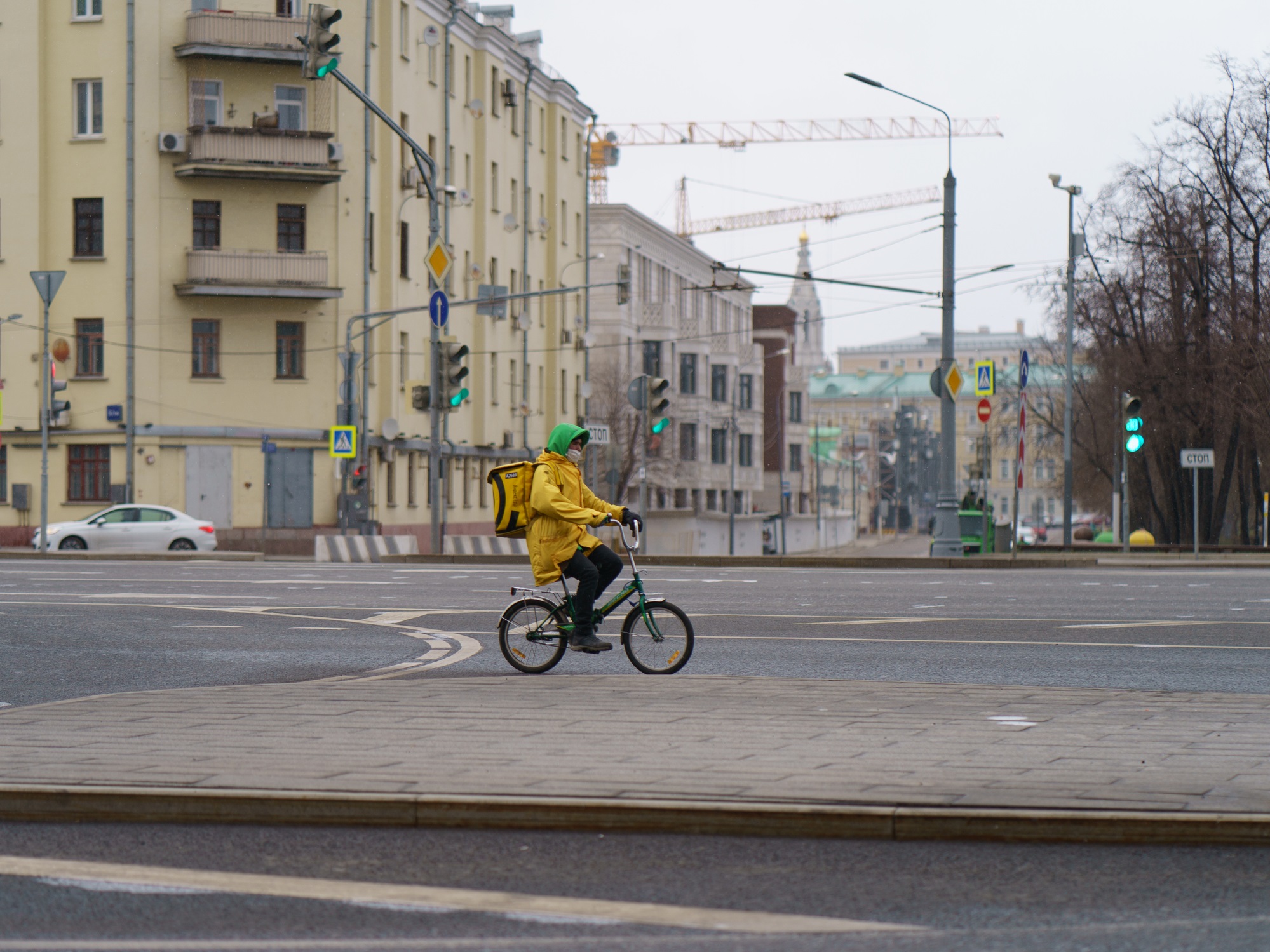At the height of the lockdown of the city of Wuhan, there was only one group of workers who could travel freely around the city. They crisscrossed empty highways and dropped goods at designated spots for people to collect, contactlessly. Delivery drivers were the lifeblood of the arrested city. For their efforts they have been lauded in the Chinese press. “Brave bikers, the warmth of spring” read a recent headline in the People’s Daily, the CCP’s mouthpiece.
Magazines ran fawning profiles of people who stepped up to become delivery drivers in the midst of the crisis, like Xinye, a personal trainer from Inner Mongolia who had been in Wuhan for over a decade. His gym closed, he decided to download a number of delivery apps and help people isolated in their homes. He had tried to volunteer at a hospital, but he had no relevant experience and so was turned away. Driving a bike and delivering food, he found a more quotidian way to help society instead. “If I can stop 7 or 8 families going out and getting infected, then I’m happy,” he wrote.
When we think of mobilities in the context of Covid-19, it is worth remembering that the self-isolation of many millions is predicated on the maintenance of a core group of essential workers who remain mobile. In China, commentators have long noted that the shift of the country away from being the export-driven ‘workshop of the world’ towards domestic demand and a vastly expanded service sector is predicated, in no small manner, by legions of delivery drivers.
The online food delivery market was already a $65 billion market in China, serving more than 500 million customers. The main players, such as Meituan, which alone boasts an average of 700,000 riders nationwide each day, include Ele.me and Baidu and are one of the most visible manifestations of China’s vast platform economy.
These drivers did not just deliver prepared food during the crisis; Meituan experienced a 400% spike in online grocery sales in some cities, and JD.com saw sales of goods like fitness equipment, kitchenware and baking equipment soar. The ‘quarantine economy,’ as it has been dubbed, has been predicated on the continued mobility of a small core of workers shouldering the vast demands of teetering economies on their bikes.
But will this reality change perception of these workers? In China delivery drivers have often been seen as part of the class of marginalised migrant labour, though the reality is slightly more complex. The average monthly salary in Wuhan in 2017 was about 6,640 yuan, according to the data provider CEIC, but delivery drivers tend to make on average 8,000 yuan per month ($1,130 approx), if not more.
While not seeming to be much higher than average, it has to be remembered that delivery drivers will include those without any formal education beyond middle school, and who would have had very little chance of earning close to the average salary of 6,640 yuan in more traditional careers. For example, in Chengdu I attended a culinary school pa9rt time and the starting salaries for graduates of that school were roughly 3,500 yuan (approx $500) in a city that is more expensive to live in than Wuhan.
Even with this slight wage advantage delivery driving has often been dismissed as a profession which is low-skilled and highly precarious. The new status of delivery drivers as a key modality in the fight against COVID-19 has led to the government finally granting them some concessions. The Beijing government has announced the construction of a total of 2,400 dorm rooms for rent to address the housing shortage for local couriers. The dorms will be treated as part of the public infrastructure, only available for lease and not for sale. The government has also told companies that they must outline their obligations to employees in formal contracts, offer on-the-job injury compensation and medical insurance to ensure their rights and benefits.
One might hope that a sole positive to come out of COVID-19 is a global rethink in how we understand ‘low-skilled’ and ‘key workers’. In the US the stimulus package–the largest in history–has had to include provisions for the service workers of the gig economy, which goes some way in acknowledging the crucial functioning of this sector to the overall economy.
In the UK the government has had to formally state which services are key workers and–surprisingly in a polity that has so often sacrificed the wellbeing of the majority for the privileges of the financial services sector–none of these workers happen to be bankers, software engineers or accountants. Instead, they are teachers, nurses, doctors, food chain workers, funeral home workers, utility workers and people who work for public transport.
Only a short time ago, Priti Patel, the home secretary, unveiled new immigration rules to the UK post-Brexit that would have prevented ‘unskilled workers’ who earned less than £25,000 from being able to immigrate to the UK. Just last week, she appeared on her twitter feed, applauding with the nation at 8pm to celebrate the NHS. NHS starting salaries include nurses, £24,400, paramedics £24,400, midwives £24,200, radiographers £22,200 and care assistants £17,600. None of these workers would be deemed skilled or important enough under the regulations the government unveiled a month ago to be worthy of visas to the UK.
In the wake of COVID-19, will there be a global understanding of who and what actually matters to the functioning of our societies, and a stronger will to provide more protection for the workers who are so often overlooked.
When the global economy ground to a halt, it is worth remembering that the mobility of a few allowed for the survival of the many.
Barclay Bram Shoemaker is a D.Phil. candidate in Area Studies at Oxford University.
